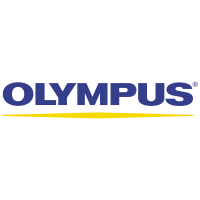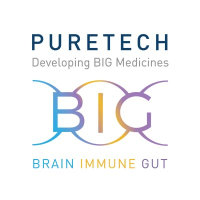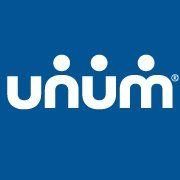
Olympus Corp
TSE:7733


| US |

|
Johnson & Johnson
NYSE:JNJ
|
Pharmaceuticals
|
| US |

|
Berkshire Hathaway Inc
NYSE:BRK.A
|
Financial Services
|
| US |

|
Bank of America Corp
NYSE:BAC
|
Banking
|
| US |

|
Mastercard Inc
NYSE:MA
|
Technology
|
| US |

|
UnitedHealth Group Inc
NYSE:UNH
|
Health Care
|
| US |

|
Exxon Mobil Corp
NYSE:XOM
|
Energy
|
| US |

|
Pfizer Inc
NYSE:PFE
|
Pharmaceuticals
|
| US |

|
Palantir Technologies Inc
NYSE:PLTR
|
Technology
|
| US |

|
Nike Inc
NYSE:NKE
|
Textiles, Apparel & Luxury Goods
|
| US |

|
Visa Inc
NYSE:V
|
Technology
|
| CN |

|
Alibaba Group Holding Ltd
NYSE:BABA
|
Retail
|
| US |

|
JPMorgan Chase & Co
NYSE:JPM
|
Banking
|
| US |

|
Coca-Cola Co
NYSE:KO
|
Beverages
|
| US |

|
Walmart Inc
NYSE:WMT
|
Retail
|
| US |

|
Verizon Communications Inc
NYSE:VZ
|
Telecommunication
|
| US |

|
Chevron Corp
NYSE:CVX
|
Energy
|
Utilize notes to systematically review your investment decisions. By reflecting on past outcomes, you can discern effective strategies and identify those that underperformed. This continuous feedback loop enables you to adapt and refine your approach, optimizing for future success.
Each note serves as a learning point, offering insights into your decision-making processes. Over time, you'll accumulate a personalized database of knowledge, enhancing your ability to make informed decisions quickly and effectively.
With a comprehensive record of your investment history at your fingertips, you can compare current opportunities against past experiences. This not only bolsters your confidence but also ensures that each decision is grounded in a well-documented rationale.
Do you really want to delete this note?
This action cannot be undone.

| 52 Week Range |
1 624
2 404.5
|
| Price Target |
|
We'll email you a reminder when the closing price reaches JPY.
Choose the stock you wish to monitor with a price alert.

|
Johnson & Johnson
NYSE:JNJ
|
US |

|
Berkshire Hathaway Inc
NYSE:BRK.A
|
US |

|
Bank of America Corp
NYSE:BAC
|
US |

|
Mastercard Inc
NYSE:MA
|
US |

|
UnitedHealth Group Inc
NYSE:UNH
|
US |

|
Exxon Mobil Corp
NYSE:XOM
|
US |

|
Pfizer Inc
NYSE:PFE
|
US |

|
Palantir Technologies Inc
NYSE:PLTR
|
US |

|
Nike Inc
NYSE:NKE
|
US |

|
Visa Inc
NYSE:V
|
US |

|
Alibaba Group Holding Ltd
NYSE:BABA
|
CN |

|
JPMorgan Chase & Co
NYSE:JPM
|
US |

|
Coca-Cola Co
NYSE:KO
|
US |

|
Walmart Inc
NYSE:WMT
|
US |

|
Verizon Communications Inc
NYSE:VZ
|
US |

|
Chevron Corp
NYSE:CVX
|
US |
This alert will be permanently deleted.
Olympus Corp
Olympus Corporation, originating from the heart of Japan in 1919, has evolved into a global powerhouse, particularly revered for its contributions to the field of optics and imaging. Initially carving its reputation through crafting precision microscope lenses, Olympus seamlessly expanded its capabilities into the realms of endoscopy and digital imaging. This strategic pivot not only defined its legacy but firmly anchored its presence in the medical world, where it became a leader in endoscopic technology. The company adeptly leveraged its expertise to revolutionize medical diagnostics and treatment, helping medical professionals see and diagnose better—enhancing both physician dexterity and patient outcomes.
Revenue for Olympus is predominantly driven by its Medical Business sector, which constitutes a significant portion of its overall profits, underscoring its transformation from a diversified manufacturer to a specialized player in healthcare technology. They are deeply committed to R&D, funneling substantial resources to innovate and bolster their portfolio in medical devices, particularly in fields like therapeutic interventions. While imaging products for consumers have historically been a notable segment, the shift toward medical technology aligns with broader market demands and ensures sustainable growth. This focus demonstrates Olympus's intent to maximize its competitive advantages, allowing it to remain at the forefront of its niche industries and effectively respond to global healthcare challenges.

Olympus Corporation, originating from the heart of Japan in 1919, has evolved into a global powerhouse, particularly revered for its contributions to the field of optics and imaging. Initially carving its reputation through crafting precision microscope lenses, Olympus seamlessly expanded its capabilities into the realms of endoscopy and digital imaging. This strategic pivot not only defined its legacy but firmly anchored its presence in the medical world, where it became a leader in endoscopic technology. The company adeptly leveraged its expertise to revolutionize medical diagnostics and treatment, helping medical professionals see and diagnose better—enhancing both physician dexterity and patient outcomes.
Revenue for Olympus is predominantly driven by its Medical Business sector, which constitutes a significant portion of its overall profits, underscoring its transformation from a diversified manufacturer to a specialized player in healthcare technology. They are deeply committed to R&D, funneling substantial resources to innovate and bolster their portfolio in medical devices, particularly in fields like therapeutic interventions. While imaging products for consumers have historically been a notable segment, the shift toward medical technology aligns with broader market demands and ensures sustainable growth. This focus demonstrates Olympus's intent to maximize its competitive advantages, allowing it to remain at the forefront of its niche industries and effectively respond to global healthcare challenges.
Revenue Decline: Olympus reported a 12% year-on-year drop in consolidated revenue to JPY 206.5 billion for Q1, falling short of expectations.
Profit Down: Adjusted operating profit fell 65% year-on-year to JPY 13.2 billion, with margins pressured by declining sales and higher SG&A expenses.
US Market Challenges: US GIS division saw an 18% sales decline, attributed to tough prior-year comparisons and purchase delays ahead of new product launches like the EDOF scope.
Guidance Cut: Full-year revenue and operating profit forecasts were revised downward to reflect US tariffs, FDA import alerts, and ongoing market softness.
Cost Controls: Management is intensifying cost discipline, aiming to keep SG&A growth below revenue growth and implement structural reforms.
FDA & Quality: Project Elevate addressing FDA warning letters is 96% complete; inspections are pending, but no additional Elevate-related costs are expected this year.
Innovation Focus: Launch of new products (EDOF scope, EU-ME3, Slim EBUS, VISERA ELITE III, THUNDERBEAT II) and creation of Swan EndoSurgical JV highlight a strategic push into robotics and AI.
China & Japan Weakness: Business in China remains challenged by the Buy China policy and in Japan by persistent hospital budget constraints, with local manufacturing planned to support recovery.





































